Abstract
In spite of the recognition of potentially toxic chemicals in chlorinated drinking water, few studies have evaluated reproductive health consequences of such exposure. Using data from a case-control study of miscarriage, preterm delivery, and low birth weight in central North Carolina, we evaluated risk associated with water source, amount, and trihalomethane (THM) concentration. Water source was not related to any of those pregnancy outcomes, but an increasing amount of ingested water was associated with decreased risks of all three outcomes (odds ratios around 1.5 for 0 glasses per day relative to 1-3 glasses per day, falling to 0.8 for 4+ glasses per day). THM concentration and dose (concentration x amount) were not related to pregnancy outcome, with the possible exception of an increased risk of miscarriage in the highest sextile of THM concentration (adjusted odds ratio = 2.8, 95% confidence interval = 1.1-2.7), which was not part of an overall dose-response gradient. These data do not indicate a strong association between chlorination by-products and adverse pregnancy outcome, but given the limited quality of our exposure assessment and the increased miscarriage risk in the highest exposure group, more refined evaluation is warranted.
Full text
PDF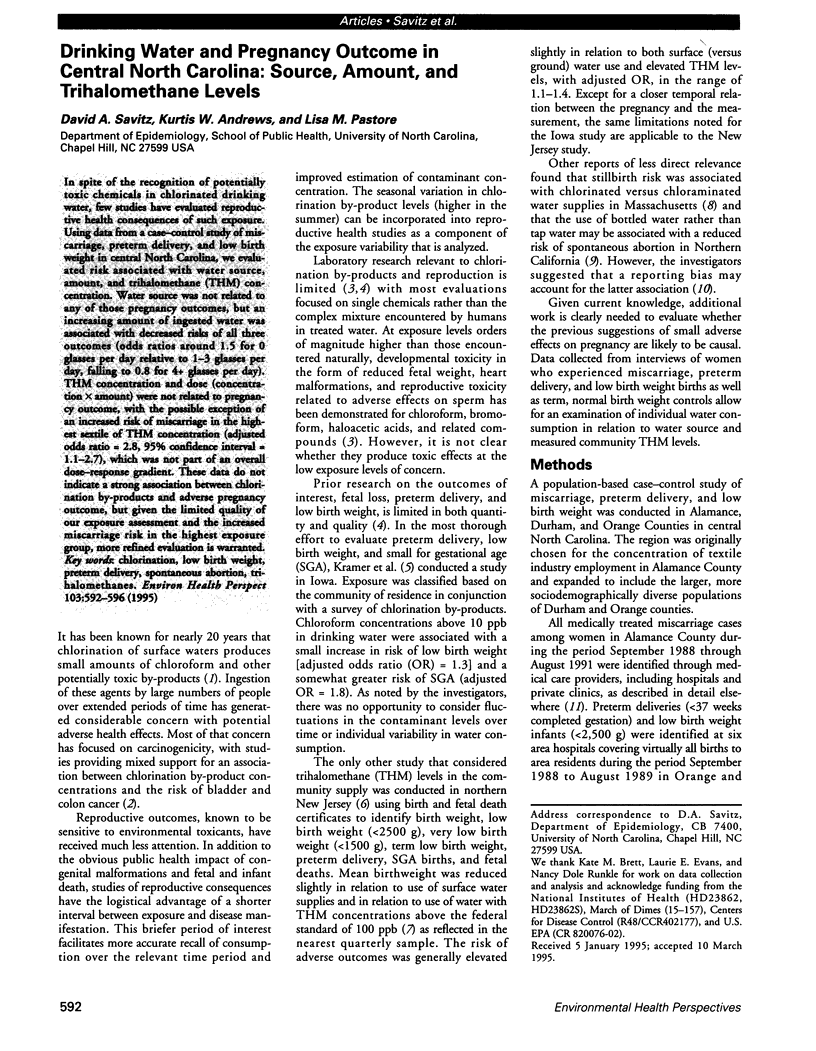
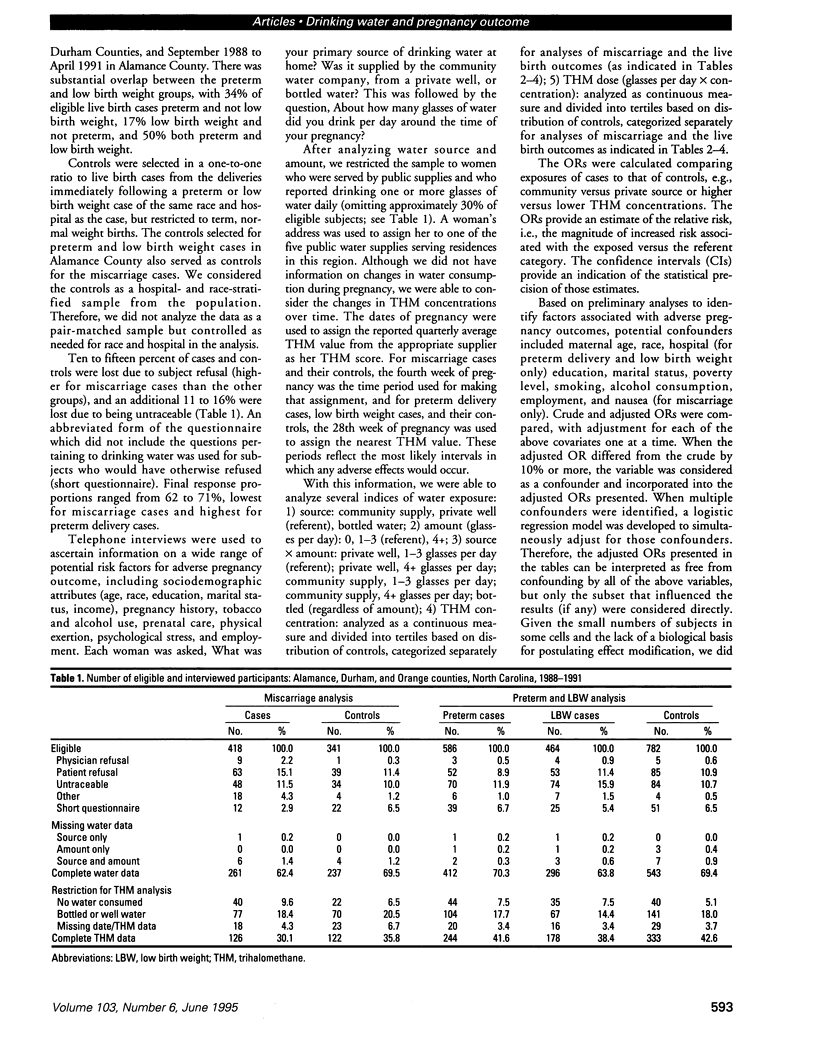
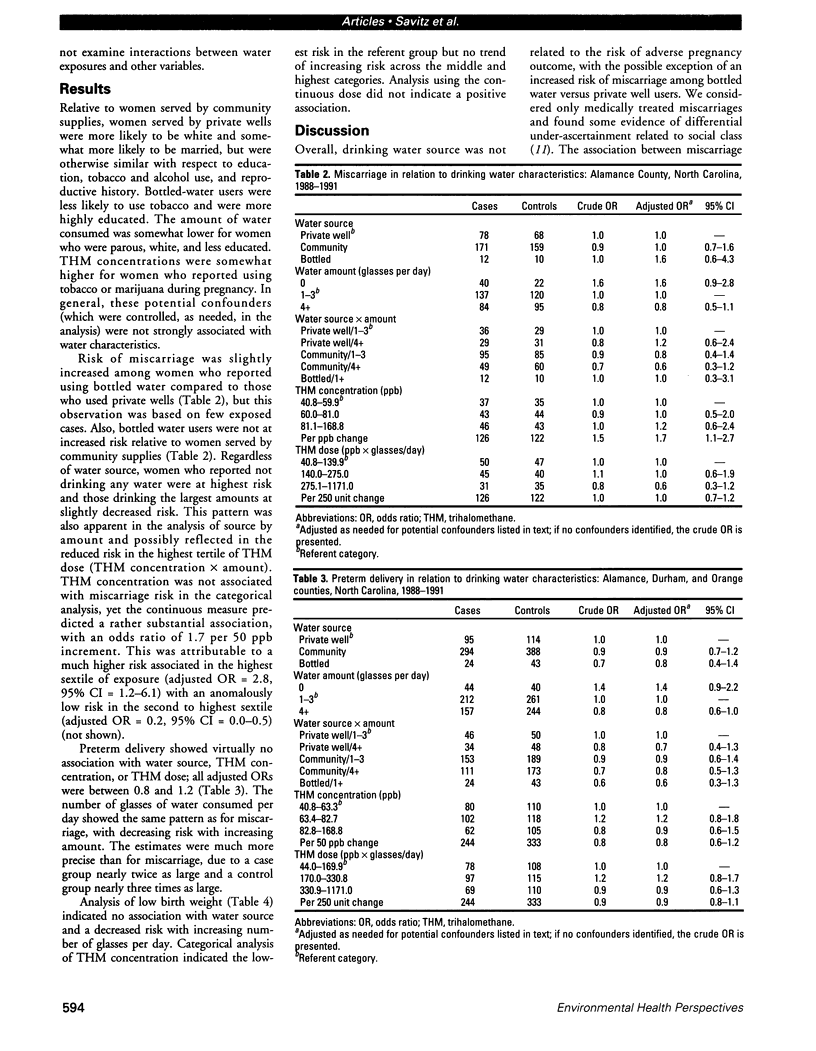
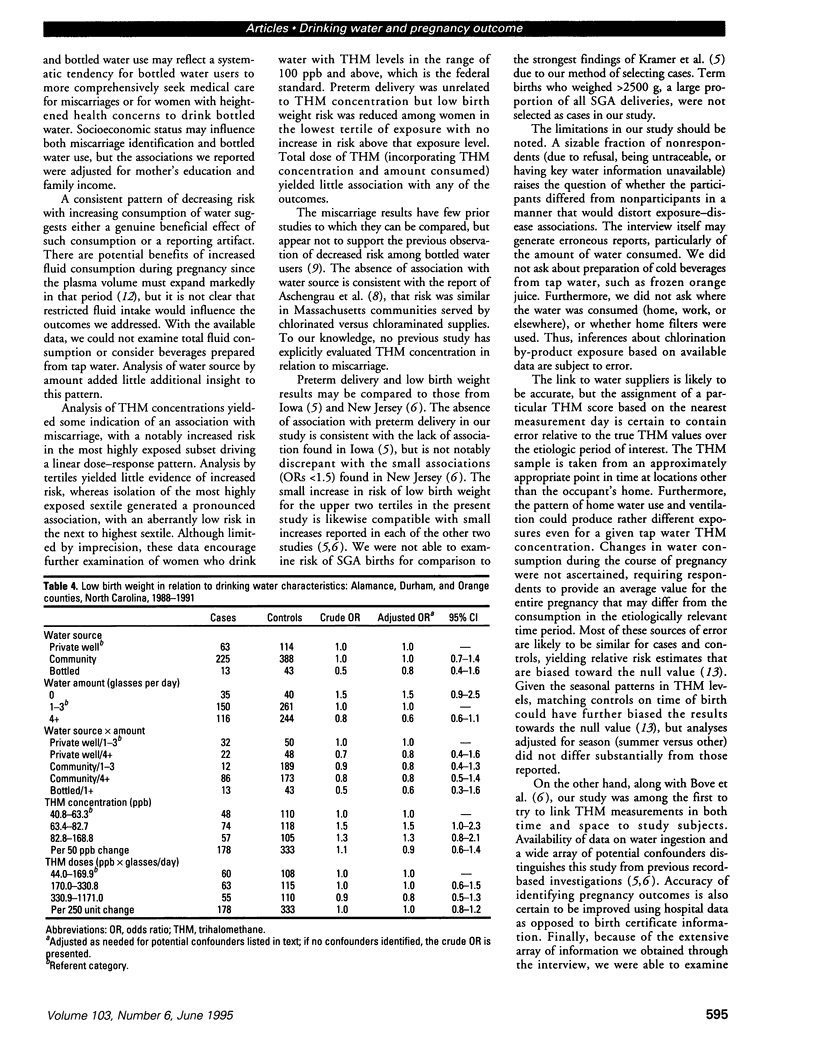
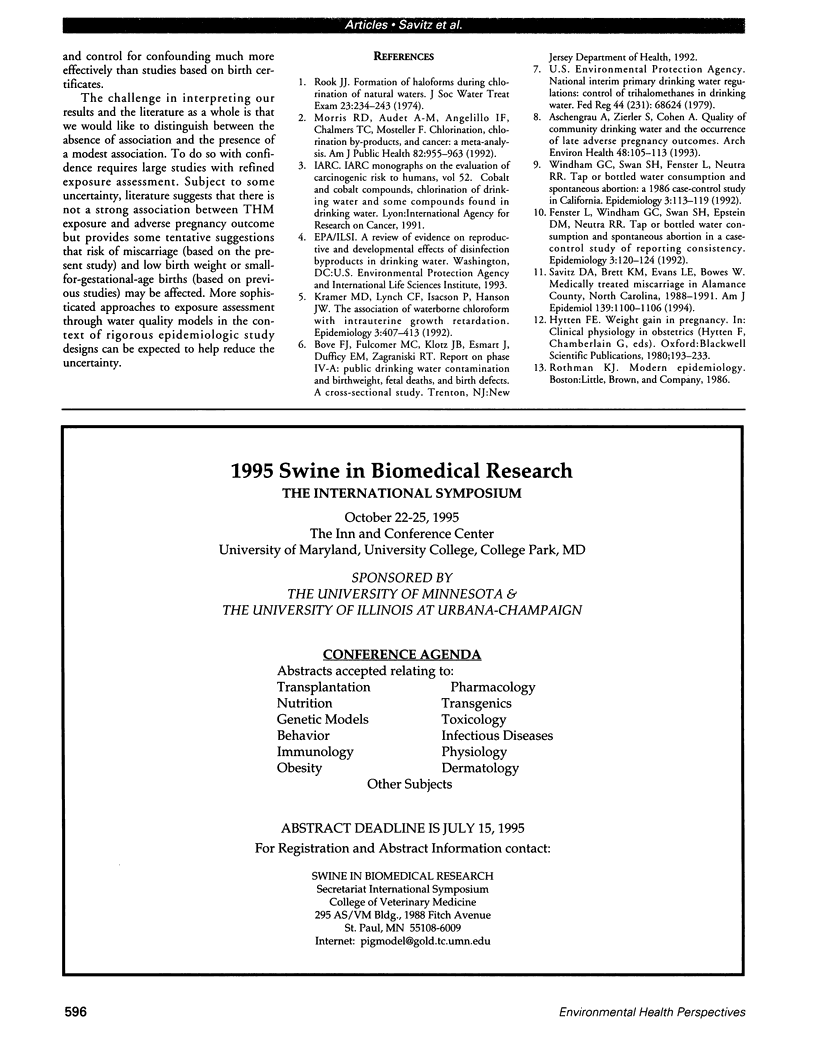
Selected References
These references are in PubMed. This may not be the complete list of references from this article.
- Aschengrau A., Zierler S., Cohen A. Quality of community drinking water and the occurrence of late adverse pregnancy outcomes. Arch Environ Health. 1993 Mar-Apr;48(2):105–113. doi: 10.1080/00039896.1993.9938403. [DOI] [PubMed] [Google Scholar]
- Fenster L., Windham G. C., Swan S. H., Epstein D. M., Neutra R. R. Tap or bottled water consumption and spontaneous abortion in a case-control study of reporting consistency. Epidemiology. 1992 Mar;3(2):120–124. doi: 10.1097/00001648-199203000-00009. [DOI] [PubMed] [Google Scholar]
- Kramer M. D., Lynch C. F., Isacson P., Hanson J. W. The association of waterborne chloroform with intrauterine growth retardation. Epidemiology. 1992 Sep;3(5):407–413. doi: 10.1097/00001648-199209000-00005. [DOI] [PubMed] [Google Scholar]
- Morris R. D., Audet A. M., Angelillo I. F., Chalmers T. C., Mosteller F. Chlorination, chlorination by-products, and cancer: a meta-analysis. Am J Public Health. 1992 Jul;82(7):955–963. doi: 10.2105/ajph.82.7.955. [DOI] [PMC free article] [PubMed] [Google Scholar]
- Savitz D. A., Brett K. M., Evans L. E., Bowes W. Medically treated miscarriage in Alamance County, North Carolina, 1988-1991. Am J Epidemiol. 1994 Jun 1;139(11):1100–1106. doi: 10.1093/oxfordjournals.aje.a116953. [DOI] [PubMed] [Google Scholar]
- Windham G. C., Swan S. H., Fenster L., Neutra R. R. Tap or bottled water consumption and spontaneous abortion: a 1986 case-control study in California. Epidemiology. 1992 Mar;3(2):113–119. doi: 10.1097/00001648-199203000-00008. [DOI] [PubMed] [Google Scholar]


